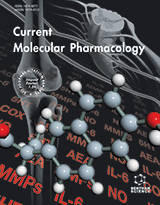Abstract
Background: In 2022, icaritin a Traditional Chinese Medicine with estrogen-like activities was recommended by the CSCO guidelines as a systematic treatment for patients with advanced HCC due to its clinical safety and efficacy. However the mechanism and targets of icaritin are unclear. In this study we aimed to reveal the target of icaritin in HCC.
Methods: First literature related to icaritin was downloaded from the Web of Science. The software programs “Rstudio” “VOSviewer” and “Mendeley Desktop” were used to analyze the distribution of icaritin publications and research hotspots. Meanwhile icaritin-related genes were obtained by combining them with the PubChem database. Second transcriptome data of HCC patients were obtained from the TCGA database. The proteinprotein interaction (PPI) analysis of icaritin-related genes was performed using the String data platform and the visualization and network topology analysis were performed using Cytoscape. Cox regression analyses were combined to screen the hub target and verified it through cell experiments.
Results: A total of 239 icaritin-related articles were obtained HCC is a new hotspot in the icaritin field. 292 icaritin-related genes were obtained and a core module containing 34 genes was obtained by module division. Among them ESR1 was an independent prognostic factor. Molecular docking showed that ESR1 and icaritin had a high affinity. Functional studies revealed that ESR1 inhibits HCC cell malignant proliferation and improves the sensitivity of HCC cells to icaritin.
Conclusion: We propose that ESR1 as a target of icaritin may be conducive to improving icaritin therapy.
Current Molecular Pharmacology
Title:Screening and Identification of ESR1 as a Target of Icaritin in Hepatocellular Carcinoma: Evidence from Bibliometrics and Bioinformatic Analysis
Volume: 17
Author(s): Yinghui Zhou, Jia Gu, Huiying Yu, Fengyang Chen, Chao Long, Maiweilan Maihemuti, Tingsong Chen*Wei Zhang*
Affiliation:
- The Second Department of Oncology, The Seventh People’s Hospital of Shanghai, Shanghai, China
- Department of Hepatobiliary Surgery, General Hospital of Northern Theater Command, Shenyang, China
Abstract:
Background: In 2022, icaritin a Traditional Chinese Medicine with estrogen-like activities was recommended by the CSCO guidelines as a systematic treatment for patients with advanced HCC due to its clinical safety and efficacy. However the mechanism and targets of icaritin are unclear. In this study we aimed to reveal the target of icaritin in HCC.
Methods: First literature related to icaritin was downloaded from the Web of Science. The software programs “Rstudio” “VOSviewer” and “Mendeley Desktop” were used to analyze the distribution of icaritin publications and research hotspots. Meanwhile icaritin-related genes were obtained by combining them with the PubChem database. Second transcriptome data of HCC patients were obtained from the TCGA database. The proteinprotein interaction (PPI) analysis of icaritin-related genes was performed using the String data platform and the visualization and network topology analysis were performed using Cytoscape. Cox regression analyses were combined to screen the hub target and verified it through cell experiments.
Results: A total of 239 icaritin-related articles were obtained HCC is a new hotspot in the icaritin field. 292 icaritin-related genes were obtained and a core module containing 34 genes was obtained by module division. Among them ESR1 was an independent prognostic factor. Molecular docking showed that ESR1 and icaritin had a high affinity. Functional studies revealed that ESR1 inhibits HCC cell malignant proliferation and improves the sensitivity of HCC cells to icaritin.
Conclusion: We propose that ESR1 as a target of icaritin may be conducive to improving icaritin therapy.
Export Options
About this article
Cite this article as:
Zhou Yinghui, Gu Jia, Yu Huiying, Chen Fengyang, Long Chao, Maihemuti Maiweilan, Chen Tingsong*, Zhang Wei*, Screening and Identification of ESR1 as a Target of Icaritin in Hepatocellular Carcinoma: Evidence from Bibliometrics and Bioinformatic Analysis, Current Molecular Pharmacology 2024; 17 : e18761429260902 . https://dx.doi.org/10.2174/0118761429260902230925044009
| DOI https://dx.doi.org/10.2174/0118761429260902230925044009 |
Print ISSN 1874-4672 |
| Publisher Name Bentham Science Publisher |
Online ISSN 1874-4702 |

- Author Guidelines
- Bentham Author Support Services (BASS)
- Graphical Abstracts
- Fabricating and Stating False Information
- Research Misconduct
- Post Publication Discussions and Corrections
- Publishing Ethics and Rectitude
- Increase Visibility of Your Article
- Archiving Policies
- Peer Review Workflow
- Order Your Article Before Print
- Promote Your Article
- Manuscript Transfer Facility
- Editorial Policies
- Allegations from Whistleblowers
- Announcements




























